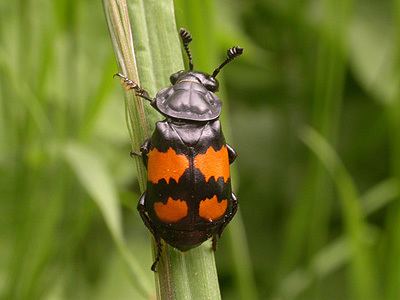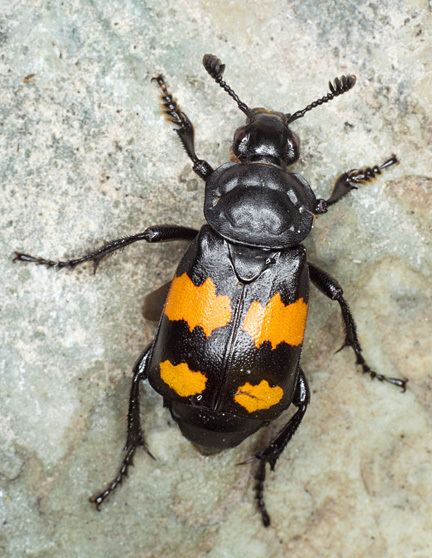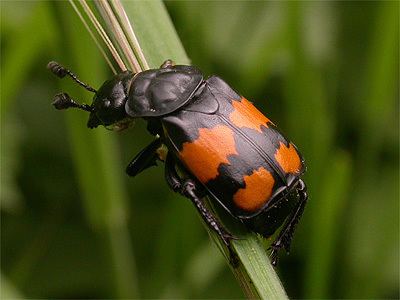Order Coleoptera Genus Nicrophorus Higher classification Burying beetle | Scientific name Nicrophorus vespilloides Rank Species | |
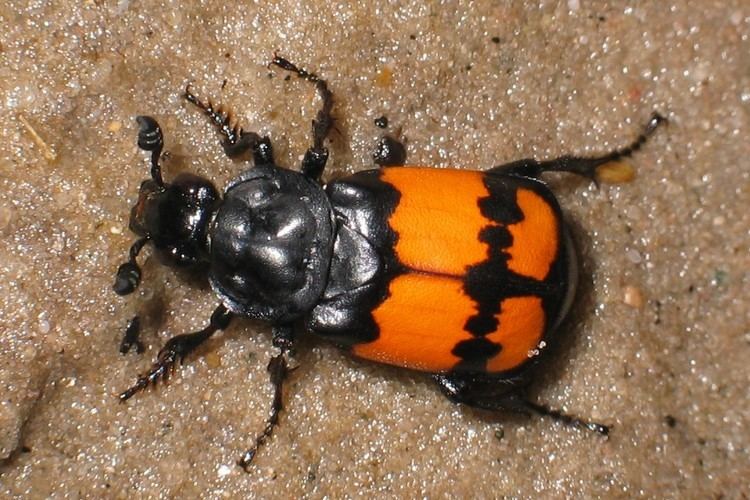 | ||
Similar Burying beetle, Beetle, Silphidae, Insect, Nicrophorus vespillo | ||
Sexton beetle or burying beetle with gamasid mites nicrophorus vespilloides
Nicrophorus vespilloides is a burying beetle described by Johann Friedrich Wilhelm Herbst in 1783.
Besides the many interesting behaviors this beetle exhibits, it is of interest because in North America it is restricted to Sphagnum bogs and marshes, whereas in Europe and throughout the Palearctic it is found in open forest habitats. The restriction of N. vespilloides to bogs in the North America has been attributed to competition with its congener, N. defodiens which in this area is found in forest habitats. N. vespilloides reproduces exclusively in bogs in North America and is never found in adjacent (<100 m or 330 ft) forested habitat in the Mer Bleue bog area near Ottawa, Ontario, Canada.
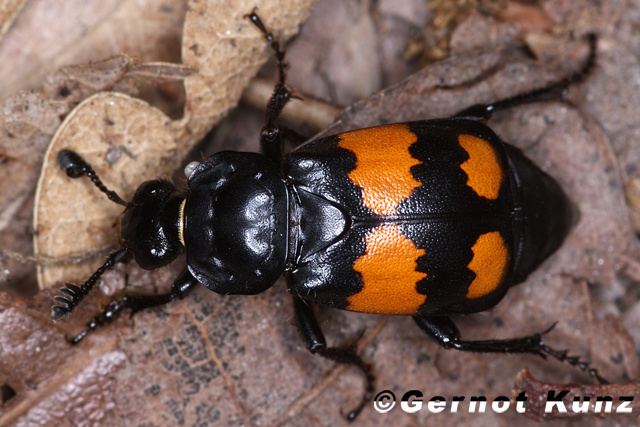
There are also a number of phoretic (hitch-hiking) mites that are associated with N. vespilloides. These include Pelzneria nr. crenulata, Macrocheles merderius, and Uroobovella nr. novasimilis and the largest mite Poecilochirus carabi. P. carabi is not attached by any physical means (such as a secreted anal stalk in the case of M. merderius) to N. vespilloides. When the males or females of N. vespilloides have finished breeding on a carcass the deutonymphs of P. carabi roam freely about the body of the beetles as they search for new carcasses to reproduce. It had been proposed that P. carabi deutonymphs, on arrival at a new carcass dismounted from the beetles and consumed fly eggs and larvae which would have competed for the beetle larvae for food. This relationship which benefited the beetles has been described as mutualistic. However, it has been shown that adults of P. carabi consume the eggs of N. vespilloides and that this has direct and negative effects on the reproduction of this beetle species.

N. vespilloides is also used as a model organism in the study of social immunity.

